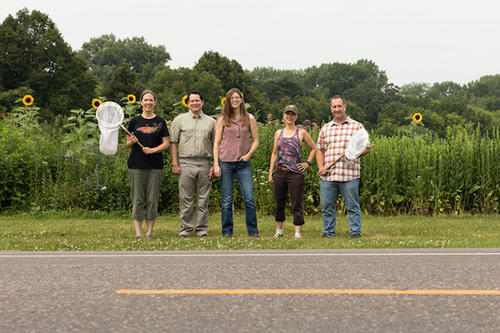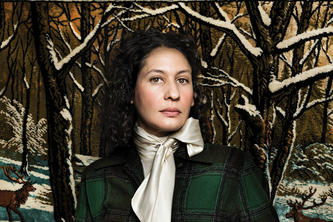
For butterflies and bees, Minnesota’s big roadside attraction isn’t Paul Bunyan or the SPAM museum—it’s plants.
For pollinators, which are experiencing population decline and habitat loss, roadside plants are particularly important.
Since roads are home to automobile traffic year-round, road salt lingers for months. This fact struck Emilie Snell-Rood, a U of M associate professor in the College of Biological Sciences, during her first winter in Minnesota. So she launched a study to assess how elevated sodium levels affect butterflies. “The questions are interesting at a basic level,” Snell-Rood says, “but they also have these really important and direct translations.”
To tackle these questions the Environmental and Natural Resources Trust Fund awarded a multiyear grant to Snell-Rood and her collaborators, including CBS faculty Elizabeth Borer and Clay Carter, and College of Food, Agricultural and Natural Resource Sciences faculty Dan Cariveau, Karen Oberhauser, and Marla Spivak, along with colleagues from the Minnesota Department of Natural Resources.
Surveys in the field kicked off this summer, with technicians crisscrossing the state covering 3,000 miles to collect data. For three years Snell-Rood will split her time between roadside, field plots, and lab. DNR staff and others will use the results to develop best practices for managing Minnesota’s roadsides.
Snell-Rood is thrilled that work is underway. “This project will help us answer some really interesting questions about how nutrients and heavy metals interact to affect plant and pollinator health,” she says.
In the coming years, Minnesota’s roadside attractions may include pull-offs to view thriving monarchs and native bees.
- Categories:
- Agriculture and Environment




